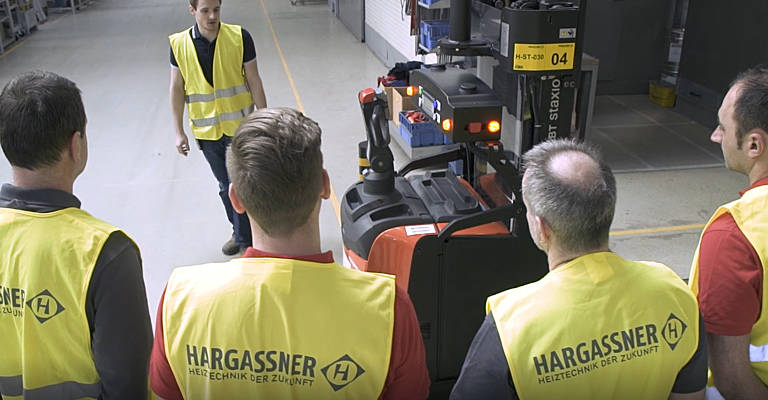When you have decided to automate certain material handling processes, don’t disregard the human aspect in your automation project. A successful automation projects starts with thinking of your employees: how mature is your company when it comes to automation? Are your employees used to working with AGVs? Do they know how to behave? Do they have a lean environment to work in?
Change of mindset about automation
If operators and the middle management keep the same habits after automation has been implemented, then chances are that the AGV gets regularly interrupted, bringing productivity down. This is simply a matter of education: employees need to know how to work together with AGVs.
The first step here is to create understanding of the benefits among employees. This is crucial, since the automated trucks are taking over an activity that a human operator was doing before. It’s therefore normal that people see them as a threat to their own job. Start with automating monotonous tasks with low added value, that staff will be glad to hand over, and invest in reorientation. Other tips are to humanise your AGVs: try giving them a name instead of saying machine A or B or to set up a KPI for your teams to minimise the amount of stops of their new AGV teammates.

Train to work safely with AGVs
In most of the applications there is a mix of AGVs and human operators, that's why training is very important, not only for people working in that area but also temporary staff, suppliers and so on. Because people need to be aware of the fact that an automated vehicle driving around behaves differently than a human operator.
A question that often comes up is whether automation is safe or not. A major benefit with AGVs is the consistency in alertness, they never get tired or distracted like humans. The automated vehicles will behave safely when used in the right way. First of all, thanks to the onboard navigation system; secondly, because of the European standards that require them to be equipped with scanners, sensors, alert signals, emergency buttons, and other additional safety equipment. Lastly, there's also a self-diagnostic control mechanism: from the moment one of the parameters is not like it should be, the machine will stop to avoid any risk.
What can help to improve safety at your automated site is to invest in visualisation with lines indicating the route of the AGV. Another aid can be to add safety equipment or safety barriers between walking paths and driveways or other specific zones. Scanners can also indicate right away if there's someone in this area and a traffic light can let you know whether it’s safe to enter a zone.





